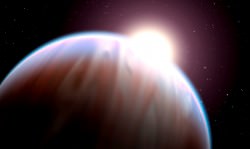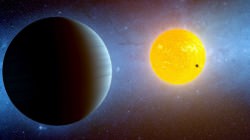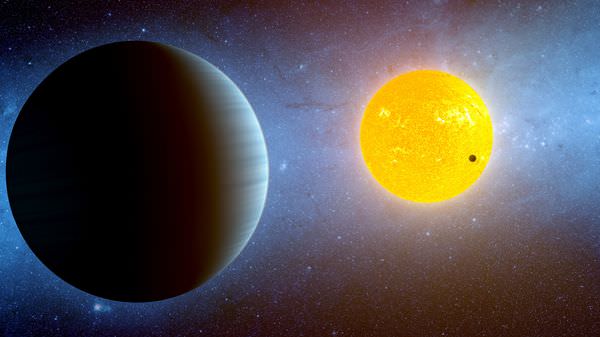How big do planets get? Can they get star sized?
Everybody wants the biggest stuff.
Soft drink sizes, SUV’s, baseball caps, hot dogs and truck nuts.
Astronomers mostly measure stars in terms of mass and use the Sun as a yard stick. This star is 3 solar masses, that star is 10 solar masses, and so on.
We’re pandering to those of you who want the most massive stuff as opposed to the most volumetric stuff. So if you want the biggest truck, but don’t care if it’s got the most truck atoms in one place, this might not be for you.
How massive can planets get, and where can I order a custom one more massive than a star?
It all depends on what your planet is made of. There are two flavors of planets, gas and rock.
Gas planets, like Saturn and Jupiter are pretty much made of the same stuff as our Sun.
Jupiter’s pretty big, but it’s actually only about 1/1000th the mass of our star. If you made it more massive. by crashing about 80 Jupiters together, you’d get the same amount of mass as the smallest possible red dwarf star.
And all that mass would compress and heat up the core and it would ignite as a star.

Extrasolar planet astronomers have turned up some pretty massive gas planets. The most massive so far contains 28.7 times the mass of Jupiter.
That’s so massive it’s more like a brown dwarf.
But if you had a planet entirely made of rock, like the Earth. It would need to be much, much larger before its core would ignite in fusion.
It would need to be dozens of times the mass of our Sun.
Stars with 8-11 stellar masses can fuse silicon. So a rocky planet would need millions of times the mass of the Earth before it would have that kind of pressure and temperature.
So you could get a situation where you have more mass than the Sun in a rock flavored world, and it wouldn’t ignite as a star. It would get pretty warm though.
No star can burn iron. In fact, when stars develop iron in their core, that’s when they shut down suddenly and you get a supernova.
Feel free to collect all the iron in the Universe together and lump it into a ridiculously huge pile and no matter how long you stare at for, it’ll never boil or turn into a star.
It might turn into a black hole, though.

The largest rocky planet ever discovered is Kepler 10c, with 17 times the mass of Earth.
Massive, but nowhere near the smallest star.
There’s new research that says that heavier elements blasted out of supernovae might collect within huge star forming nebulae, like gold in the eddies of a river. This metal could collect into actual stars. Perhaps 1 in 10,000 stars might be made of heavier elements, and not hydrogen and helium.
Metal stars.
So, it’s theoretically possible. There might be corners of the Universe where enough metal has collected together that you could end up with a star that’s made up of planety stuff. And that’s pretty amazing.
What do you think? If we found one of these giant metal stars, what should we call it?
And if you like what you see, come check out our Patreon page and find out how you can get these videos early while helping us bring you more great content!


